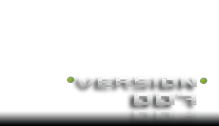

IRCd Modes
| +b | +b stands for channel bans and allows a channel operator to
deny a person (or a group of people) access to the channel. If someone is
banned while in the channel, they will not be able to talk. This additional
feature is known as the +bquiet mode, although
the actual mode is still just +b. In addition /part messages will be
suppressed. However, this will not affect anyone having the except mode +e
on his host which is discussed below. Syntax: /mode #channelname +/-b {hosts}
Example: /mode #tg007 +b-bb *!*@annoying.pest.com *!*@*.ca *!~@*.msn.com
|
| +c | The +c mode stands for colorless. If a message sent to the channel contains color codes (supported by most IRC clients) or control codes (including bold, underline, reverse, etc.), the message will be blocked as if the channel was moderated for that person. |
| +e | +e stands for
except which excepts users from the channel who match a hostmask in the
banlist allowing them to join. When a hostmask is set in the except list,the
mode +e overrides the ban on the user that matches the hostmask. Syntax: /mode #channelname +/-e {hosts}
Example: /mode #tg007 +e err0r!*@*.tg007 |
| +i | Setting a channel to invite only will only allow those who have been invited to the channel (with the /invite command or in the channel's invite list) to join the channel. |
| +I | This mode
allows a channel operator to set a list of users who are allowed to join a +i
(invite only) channel. Syntax: /mode #channelname +/-I {hosts}
Example: /mode #tg007 +I err0r!*@*.tg007 |
| +j | The +j mode is
used for Channel join throttling. It is useful to control join floods by
determining the N number of users to join in S seconds. Syntax: /mode #channelname +/-j
N:S
Example: /mode #tg007 +j 4:5 |
| +k | The key of the channel is a word
that you must specify in your /join command when attempting to enter the
channel. If the key was incorrect or if no key was specified then you will
be denied access to this channel. Syntax: /mode #channelname +/-k
key
Example: /mode #tg007 +k testing Anybody joining the channel will need to use the /join #channelname key command. In our case, it would be /join #tg007 testing |
| +l | The channel limit allows you to
specify the maximum number of users who can be in the channel at a time.
Once this number has been reached, anyone who attempts to join the
channel will receive an error message of the channel being full. Syntax: /mode #channelname +/-l
number
Example: /mode #tg007 +l 25 |
| +L | The +L mode is currently not used for anything on DAL.net although it is implemented into the current releases of the Bahamut IRCD. +L is moderated /list. If switched on, only channels with +L will appear in the /list. The +L mode has been reserved for future. |
| +m | A moderated channel only allows the ops (@) and voices (+) to send messages to the channel. All other messages will be blocked. Anyone who is present in a moderated channel and who is not an op or voice there will also be prevented from changing their nickname. |
| +M | +M stands for only registered nicks may talk. Similar to the +R mode only those who are using and have identified to their current nick name (in other words, those who are set to umode +r) are allowed to speak in the channel although anybody may join. Unregistered nicks who are on a channel after +M is set will lose the ability to send messages to the channel until they become umode +r. |
| +n | The +n stands for no external messages. If +n is not set then it's possible for someone to send messages to the channel even if they are not present inside the channel. |
| +o | A channel operator is designated
by the @ next to their nick. This @ translates into the giving and removal
of the +o mode. Some IRC clients may use a symbol other than @ for pointing
out channel ops. Syntax: /mode #channelname +/-o
nickname(s)
Example: /mode #tg007 +oo-o err0r ozzy10 X-fusion A channel operator has the ability to kick/ban people from the channel in addition to being one of the only ones who can change the channel modes of the channel. |
| +O | The +O mode stands for oper only. Basically, it only allows those with umode +o (IRC Operators) to join the channel. This mode can only be set by an IRC Operator. |
| +p | A private channel is not shown on the WHOIS output unless the person requesting the WHOIS is also on the channel. |
| +r | The +r mode can only be set by services itself and indicates that the channel in question is registered with ChanServ. This mode has been removed. |
| +R | +R stands for registered nicknames only. As its name implies, only those who are using and have identified to their current nickname (in other words, those who are set to umode +r) are allowed to enter the channel. |
| +s | A secret channel is not shown on the WHOIS output unless the person requesting the WHOIS is also on the channel. In addition to this, a secret channel doesn't show up on a channel LIST request either. There's no need to set the +p mode if you already have +s set, as it would be redundant. |
| +t | When +t is set, only the ops of the channel can change the topic. |
| +v | As already mentioned above, when
a channel is moderated (+m), only the channel ops and the channel voices can
send messages to the channel. Only channel ops can add or remove voices. Syntax: /mode #channelname +/-v
nickname(s)
Example: /mode #tg007 +vv-v err0r ozzy10 X-fusion It should be noted that in many places, voiced users are considered as the friends of the ops and are often treated as ops in training. This is, however, not true for all channels. |
| +i | +i is also known as the invisible
mode. While it does not actually make you invisible on IRC, it can make you
quite a bit more difficult to find. To put it briefly, the invisible mode
prevents people from finding you unless they know your exact nickname or are
on the same channel as you. Please note that a lot of servers actually set
you to +i automatically when you first connect. When not set to +i, a fellow user can locate you through the /who or through the /names #channelname command. IRC Operators also have the ability to see someone regardless of whether they are invisible or not. |
| +r | The +r mode can only be set by services itself and indicates that you are using and have identified to a registered nickname. When using the /whois command on someone who is set to +r, an extra line will appear in the WHOIS output, indicating that they have identified to the nickname they are using. |
| +R | The +R mode can be set by any connect client and does not allow a client who is not umode +r to message the client. Please note that the umode +R client are not able to message the client who is not umode +r too. This includes private messages and CTCPs. A +R client will be able to receive messages from +o clients. |
| +s | Setting yourself +s is a request to the server to send you all the generic server messages and information about oper kills. This can turn into quite a flood. |
| +w | Wallops are network wide messages sent by IRC Operators to each other. Any user who is set to +w will also be able to observe the conversation. |
| +o | The +o mode designates whether
someone is an IRC Operator or not and is just about the only mode that
cannot be obtained through the /mode command. The command for a valid IRC Operator to "oper up" is: Syntax: /mode #channelname +/-v nickname(s) While obtaining the +o mode may be done through a different command, the /mode is still used for "deopering", in other words to remove the IRC Operator priviledges. Syntax: /mode nickname -o When opered, the WHOIS output of the IRCop reflects their status. Some servers may have modified their server theme to change the standard message, however, it should still be evident. |
| +a | Will allow the use of the /samode command in addition to adding a line of the IRC Operator's WHOIS output, designating them as a Services Administrator. |
| +A | Adds a line of the IRC Operator's WHOIS output, designating them as a Server Administrator. Server Administators have the ability to see +s (secret) and +p (private) channels. Server Administrators are also automatically set to +a. |
| +b | Allows an IRC Operator to view oper chatop messages. |
| +c | The +c mode entitles IRC Operators to receive a notice everytime someone connects to or disconnects from the server they are on. Due to the large number of users on DALnet, this mode is rarely used these days as it would cause an enormous flood. |
| +d | Allows for viewing of debug messages. |
| +e | +e is strongly related to the DCCALLOW feature and will display any file transfers that were stopped at the server level. |
| +f | The +f is a mode that alerts an IRC Operator everytime someone on their server gets flooded or gets disconnected for excess flood. Channels that are protected by the built-in flood protection will also be pointed out whenever the flood protection triggers. |
| +F | Can bypass the ircd's recvq throttling |
| +g | Allows an IRC Operator to view oper globop messages. This mode can actually be set by a normal user but it won't do anything for them. Originally, +g was used for global messages. However, with the arrival of Bahamut, it was changed to the flag for globops instead. |
| +h | +h is also referred to as the "helpful" mode. When set, an IRC Operator will show up in a /stats p request on their server along with their idle time. |
| +I | +I hides the server info. Which means that the server part will not be displayed in a /whois output. |
| +j | Setting yourself +j is a request to the server to send you rejected drone connection notices. |
| +k | The +k stands for KILL messages and it will instruct the server to send you all the server kill messages. This can cause quite a flood though. |
| +K | Setting yourself +K is a request to the server to send you kill notices from U:lined servers. |
| +m | Reports possible spambots and failed targets. |
| +n | Once +n is set, the IRC Operator in question will be able to view server routing notices. |
| +x/X | +x/X is used for Squelch and Silent Squelch. Stops a user transmitting, for example it stops their PRIVMSG. Only settable by U:lined servers. |
| +y | The +y mode enables an IRC Operator to see certain commands sent from an user or another IRCop. Most notibly, stats/links/admin requests are displayed. |



 Arcade
Arcade